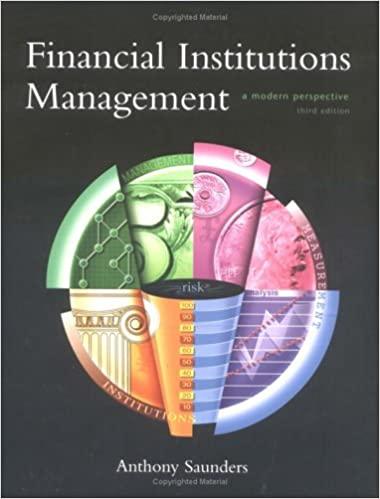
An investor has $4 Million total to invest in three new startups. The investor's goal is to maximize the expected value of her money in 1 year. The expected value of investing a certain amount of money in each startup is given in the table below. Note that investments must be made in increments of $1 Million. The investor has also decided that he doesn't need to invest all the $4 Million in the startups if it is not in her best interest to do so. Any uninvested money will remain in her current portfolio account, which is expected to have a 10% return on investment. Investment $1 Million $2 Million $3 Million $4 Million Startup AR $2 Million $6 Million $7 Million $9 Million Expected Value in 1 Year Startup B $4 Million $5 Million $7 Million $8 Million Startup $2 Million $3 Million $7 Million $10 Million Clearly identify the dynamic programming components using proper notation and words Stages: Sates: Decision Variables: Decision Benefit or Cost Function: Boundary Conditions: b. How should the investor distribute her $4 Million among the startups? SHOW ALL WORK c. If the investor follows the optimal investment strategy, how much is her $4 Million expected to be worth in 1 year? d. Suppose the investor decides to invest $1 Million in Startup A, regardless if it's a optimal decision or not. a. How much should he invest in Startup B and Startup C to maximize the expected value of her money? Does he invest all $4 Million in the startups or does he keep some in her current portfolio account? An investor has $4 Million total to invest in three new startups. The investor's goal is to maximize the expected value of her money in 1 year. The expected value of investing a certain amount of money in each startup is given in the table below. Note that investments must be made in increments of $1 Million. The investor has also decided that he doesn't need to invest all the $4 Million in the startups if it is not in her best interest to do so. Any uninvested money will remain in her current portfolio account, which is expected to have a 10% return on investment. Investment $1 Million $2 Million $3 Million $4 Million Startup AR $2 Million $6 Million $7 Million $9 Million Expected Value in 1 Year Startup B $4 Million $5 Million $7 Million $8 Million Startup $2 Million $3 Million $7 Million $10 Million Clearly identify the dynamic programming components using proper notation and words Stages: Sates: Decision Variables: Decision Benefit or Cost Function: Boundary Conditions: b. How should the investor distribute her $4 Million among the startups? SHOW ALL WORK c. If the investor follows the optimal investment strategy, how much is her $4 Million expected to be worth in 1 year? d. Suppose the investor decides to invest $1 Million in Startup A, regardless if it's a optimal decision or not. a. How much should he invest in Startup B and Startup C to maximize the expected value of her money? Does he invest all $4 Million in the startups or does he keep some in her current portfolio account







